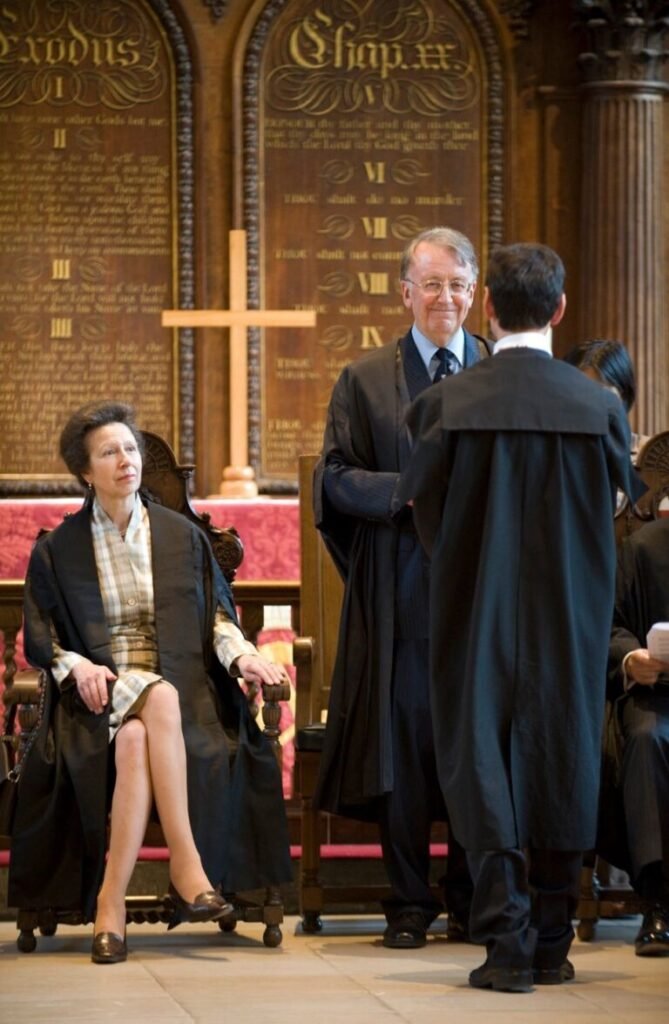Those pursuing a career at the Bar follow one of several routes, the traditional one is for students to obtain a law degree and then complete their ‘Bar Practice Course.’
Before commencing the Bar Practice Course, those intending to pursue a career as a Barrister you must join one of the four Inns of Court; Inner Temple, Middle Temple, Gray’s Inn, or Lincoln’s Inn. The Inns play an integral role in providing scholarships, education, and training from the moment you commence the Bar Practice Course and throughout your career as an established practitioner. Given the Inn’s involvement in your vocational training and general support, choosing your Inn is very important. It becomes a quasi-family. You eat there, can even sleep there, and spend a lot of time with peers and seniors there.
My Calling
Once you have passed the Bar Practice Course, you must be proposed by a Master of the Bench as a suitable candidate to be ‘Called to the Bar’ by your Inn of Court.
The longstanding tradition of being “Called to the Bar” in England and Wales has existed since the 14th century. This refers to the ceremony by which barristers have been formally recognized to pass the vocational stage of their training and takes place at one of the four inns of court in London.

Being “Called to the Bar” is a ceremonial event rooted in history and is seen as a critical turning point in a barrister’s career. The transition from a student to a barrister is signified when you are Called to the Bar. Many traditions at the English Bar are still upheld and respected. Those called must present themselves in formal suits along with white bands and collars, or ladies’ collarettes and a barristers’ wig and gown (wig dependent upon which Inn you are being Called at).
Nonetheless, the Bar is increasingly becoming diverse, and the Inns must reflect this. The option to wear non-traditional attire to the ceremony is a sign of welcome and acknowledgement within the legal community for many individuals, as it enables people to participate while being able to express their religion and culture. Some of the Inns have altered their dress requirements to include and adapt to the increasing diversity at the Bar. For example, Middle Temple provides alternatives in the dress code, which aligns with ethnic or religious traditions.

My Gown…
Lovejoyt Singh, 24, was Called to the Bar at Inner Temple, London, on November 25th, 2021. His outfit consisted of traditional Sikh attire known as Baana worn by Nihangs (Warrior Sikhs).
Nihang Singhs may trace their roots back to the period of Guru Gobind Singh, the 10th Sikh Guru, who founded the Khalsa Panth, a group of initiated Sikhs. This group included the Nihang Singh, renowned for their courage in combat and devotion to the Sikh way of life. Currently, Nihang Singh is renowned for their martial practices and is frequently regarded as the guardians of Sikh tradition and culture. They have a stringent code of behaviour and are recognized by their distinctive blue attire, which includes a turban and a long tunic. Mr Singh described his Call night being made to feel even more special to him because on his Call night, he was the first Sikh to wear his Warrior Baana along with his Barristers gown which he described as “such a privilege.”
He said, “Wearing a Baana” or traditional Sikh clothing, is essential in Sikhi for several reasons. First and foremost, “the Baana is a symbol of devotion to the Sikh faith and its principles. A Sikh can express their membership in the Sikh community and commitment to upholding Sikh values like honesty, humility, and service to others by donning the Baana.”
Mr Singh said, “to be Called to the Bar in my Baana is an honour because, after all these years of arduous work, my community is incredibly proud of what I have accomplished.” His ability to wear a Baana created the stepping stone to wearing traditional clothing for other ethnic minority communities. It has initiated a sense of precedence for all minority communities worldwide; as Mr Singh has stated, “I’m not saying I’m a role model, but they need to see people they can relate to.”

Mr Singh said, “to be Called to the Bar in my Baana is an honour because, after all these years of arduous work, my community is incredibly proud of what I have accomplished.” His ability to wear a Baana created the stepping stone to wearing traditional clothing for other ethnic minority communities. It has initiated a sense of precedence for all minority communities worldwide; as Mr Singh has stated, “I’m not saying I’m a role model, but they need to see people they can relate to.”
Mr Singh also stated that he wears his Baana daily, that it is his uniform, but is grateful that he can merge his Warrior energy as a force for Justice when fighting fearlessly for his clients. He said that he was grateful for being able to integrate both of his identities and would not change for anyone.
He said, “The external battle was hard, but faith demanded of me to keep fighting.” Mr Singh also believes traditional clothing, such as Baana and Hijab, is a part of the fundamental human right to practice your religion.
As Mr Singh continues his journey and career in law, he believes that the law should be equal and would challenge those with an issue with how he wants to live his life. He believes that compromising for old-engraved institutions should not hinder his ability to wear a Baana in the legal industry.
Baldip Singh, Barrister and Chair of Sikhs in Law, said “On Lovejoyt Singh’s Call night I was sent a picture by one of the Masters of the Bench which was captioned, “What a proud moment for all!” and he was right. Lovejoyt’s Call was a proud moment for the whole community, his video went viral. It is imperative that the Bar is made more inclusive and diverse, it really is the only way the community will have faith in the Justice System and Rule of Law. When I started there were very little role models that I could meet with or reach out to. The Bar has a big drinking culture, for many years I was drinking cranberry juice from a wine glass to fit in. Until I realized that that perception would negatively impact the next generation, it was then I became unapologetic for my faith and culture. I established Sikhs in Law for that reason, a safe space where we can still progress in our careers but not have to compromise our faith. Events do not have to serve meat and alcohol; they do not have to keep you into the late hours of the night when Sikhs wake up before sunrise for prayers. I am very proud seeing our junior members like Lovejoyt becoming the next Singh and Kaur Barristers and Solicitors, I hope they continue serving humanity.”
Paul Singh Millan, Council member of Sikhs in Law (Director of the Students Committee) said
“We really must show that a career in Law is open for all regardless of background or means. We all recognise the strengths and benefits of inclusion and diversity in the practice of Law. It is vitally important that we learn to enjoy and respect each other’s differences. This requires affirmative action, with clear strategies, rather than paying lip service to the concepts. I am immensely proud of all of our student members, in particular, their dedication to the cause and their infectious enthusiasm throughout”


